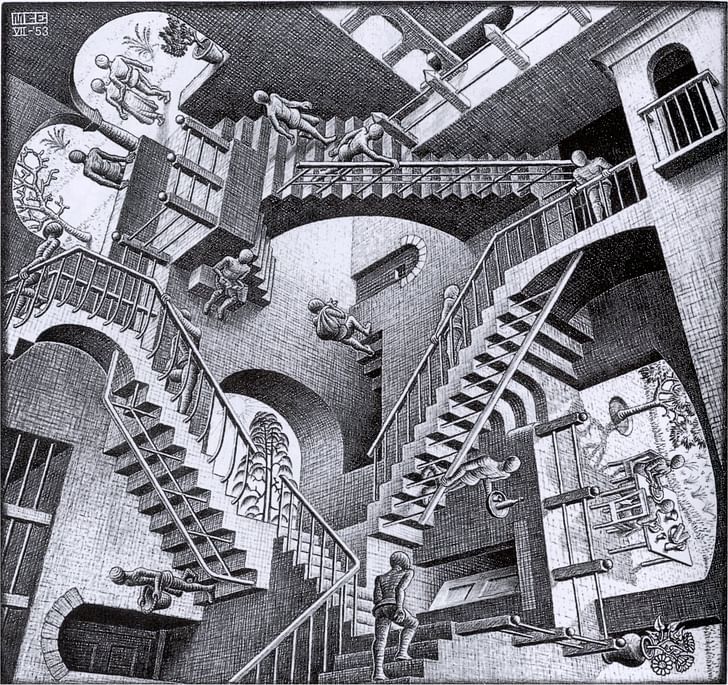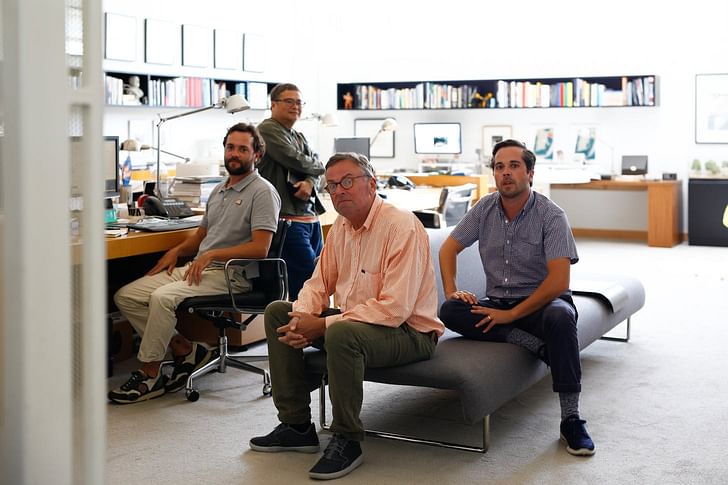

That singular moment, the moment that you decide that you are ready to cast your own shadow is one of intense pressure and relief. The world of architecture is now up to you to discover, create and affect freely and yet, that also means that the world of architecture is now up to you to discover, create and effect freely. At this point in your career, you've likely managed a team, handled various aspects of business development, and have built up significant professional experience. While some are content to continue working for a great practice run by someone else, for others, the learning curve can seem to flatten. For those in the latter category, starting your own business may feel like the next step.
Whether motivated by a desire for autonomy, or wanting the freedom to control one's work/life balance, starting your own business, even later in one's career, can be both exciting and anxiety-inducing. What does it mean to break off and start your own crusade after being part of another's? What does it mean to put your name out there and start the journey of redefining yourself on your own terms? Some decide after years of working in a firm that it may be time to partner up with another hungry designer and start their own endeavor. Some decide to break off and start their own on their own. Whatever the reasons, deciding on turning left on the career journey to start your own is a daunting task. Today we’re sharing a few stories from architects who started their own firm's after putting ample time at some of the field's leading practices, offering advice, explaining what motivated them to start their own practice, and what they brought with them from their prior years of experience. John Chan of Formation Association I had the fortuitous experience of working on projects of increasing scale from the mid-nineties to the early aughts in corporate architecture, enjoying a decade-long tenure in the anomalous Yazdani Studio of CannonDesign. I was in the midst of leading a 1,000 acre master planning effort in India when I began to contemplate starting my own practice. While I had gained invaluable experience on very large scale projects within the corporate apparatus, a meditation had grown in my mind regarding industries which seemed to possess greater agency to self-initiate creative projects than architecture did itself, specifically I was observing the real estate development and contemporary art communities, which both speak a parallel language to architecture. I started Formation Association in the precipitous spring of 2008. Thankfully, a lot of my experience translated well to the smaller projects that formed the beginning of our portfolio. The same approaches I had applied to institutional projects and their interdepartmental conversations about future programmatic expansion were now equivalently mapped to, say, a couple’s conversation about the space requirements of adding a child to the family. The scale had drastically shifted, but I found that the fundamental processes, sequence, and consensus building dynamics were still quite similar and stable, albeit with quite a bit of recalibration. Simultaneously, an unforeseen benefit of having a reservoir of previous experience was that I could selectively unlearn things and still be confident that the granular gaps could be filled in. Many processes had to become shorter, faster, more nimble, in order to make ends meet in my small operation, but it was helpful to have an intuition about the guiding forces that were important to a project versus the tactical trade-offs that are made day-to-day. Since the founding of my firm, I’ve tried my best to hold the course I set out to do, creating enough momentum with smaller projects to now build a team that not only works with next-generation developers and local contemporary artists, but is also now breaking into the same large scale institutional projects that I had started out with.
I joined Tod Williams and Billie Tsien Architects right out of school and spent sixteen years there learning to be an architect. In addition to developing a keen sense for the values they are well known for (the importance of place, materiality, and detail), it was a firm where architects are taught to be generalists, bringing an innate curiosity and critical design insight to every level of the design process.
I worked and was able to build some fantastic institutional projects but eventually reached a point where the learning curve began to flatten and I sought challenges in different “venues” of the discipline of architecture. I wanted to confront and struggle with how to apply my design values and skills to the blank canvas of my own practice.
This enthusiasm to start Studio Modh Architecture was driven by an interest in developing a rigorous method (the firm name is the Gaelic version of the word) for evaluating a client, a program, and a place to form an architecture of particularity. In the studio’s work we seek to find the unobserved artifact of a place and create a design solution that magnifies this quality. We feel this creates a deeper understanding of the role building (noun) plays in living (verb).

Patrick Hobgood of Hobgood Architects
Looking back I feel incredibly fortunate to have worked in OMA-NY's office for nearly a decade. Prior to graduate school I worked a year under the direction of Joshua Ramus. Then after GSD, I spent almost 8 years working with Shohei Shigematsu. It is hard to summarize how incredibly wonderful that experience was, surrounded by incredibly talented people from all over the globe, working on phenomenal projects in the Americas and Japan, and for the most part, with super interesting clients. It was beyond a dream.
What was remarkable for me was the experience of working so closely with Shohei on everything we pursued. We fancied ourselves a special ops team, often on what felt like a suicide mission, and there in the trenches with us was one of Rem's most trusted generals. Occasionally Rem would be very involved on certain projects; It was very intense and exciting to have a dialogue with him, but what affected me most as an architect was that time spent with Sho and that team. It was a total re-programming of how to approach design, conceptual narratives, team building, presentations, and project and client management. Nearly everything we try to do here is a direct result of what I was lucky enough to experience and learn with OMA.
Sabri Taji Farouki and Caroline Landry Farouki of Farouki Farouki
Our overarching motivation was personal independence; having our own practice lets us control our work/life balance. The impetus, though, was having our son, Remy, who was born in New York a little over three years ago. I had returned to BIG after paternity leave, and Caroline was due back at AvroKO very soon. To explain how last-minute our decision to leave New York was, we had committed to a nanny share with a family down the street in Brooklyn. Somewhat inadvertently, we got the opportunity to work on an office-starting type of project in New Orleans, which gave us the confidence to leave our jobs that we both loved. The project never materialized fully, but it got us to move down here, and even though things were difficult at first, we survived, and soon, we were flourishing.
Professional autonomy was another big motivation to start our own practice. It is rewarding to look around the room after a well-received presentation to a client that is used to working with much bigger and renowned practices, seeing just your partner and one other teammate, and knowing that we pulled off what could easily have been the work of twice as many people. Having control of our own design process also allows us to be very efficient. Efficiency is often not a strong suit of design-driven practices, which is not so good for business. When you are only four people working on eight projects at a time, you cannot afford to waste good ideas. Definitely, exhaustive iterations can foster creativity, but we find our typically rapid forward progress and production to be really rewarding.
Bryan Flaig and Alejandra Lillo of Undisclosable
Bryan: I think we’ve got slightly different views on this. One, it was sort of the time. We were still suffering from the recession and it seemed like the most logical thing to do. We had spent years building up a network and it was either do it right then or….
Alejandra: Truth be told, we might not be fit working for any other company at this point. We’d had a significant amount of independence for over a decade. While there is certainly a lot we could contribute to other practices, we had defined interests, had grown accustomed to our freedom, and the economy at the time was such that it seemed like a risk worth taking.
Bryan: It sounds sort of illogical in a way that the best time to start up is when you are in a recession.
Alejandra: It seemed to level the playing field in a certain way, like a tabula rasa. The approach to projects as a result of the economic downturn seemed to generate internal shifts for ourselves and others at that time as related to size, efficacy, acquisition strategies and design approach. In general, it was a good time to muscle ourselves into the field as Undisclosable.
As with most designers, I’ve always wanted to have my own practice and jumped at it when presented with the opportunity. At the time, I was a Director at AL_A in London, the practice that Amanda Levete founded as a spin-off of Future Systems following their professional split and his unfortunate passing. Because of the experience of both helping Amanda establish her practice and then directing it, I had gained some experience and insights into what it took to both start and run a firm.
I was also fortunate enough to have been recruited to a number of teaching positions and leveraged the opportunities of academia as a way to support the practice. I was, and remain to this day, motivated by the combination of personal, professional, intellectual and creative independence that is enabled by having my own practice. It has enabled me to merge my interests in architectural discourse, technology, research and design into a synthetic practice that engages the entire spectrum of these interests.
Scott Uriu and Herwig Baumgartner of Baumgartner + Uriu
Starting our own practice was a plan that arose almost immediately after completing school. For us, the question wasn’t if we wanted to start our own studio, just when. Ultimately, we decided it was best to take an opportunity to get some experience under our belts before jumping off. For the next several years, we worked for Gehry, Coop Himmelblau, and artist, Richard Serra; all of which proved to be valuable experiences on many levels. When we opened our office, however, we knew it would be important to ‘unlearn’ some of that experience. We needed to set up our own process and method of running things; it was a crucial mechanism of the practice that couldn’t be learned, but needed to be developed.
1 Comment
These photos always remind me of new wave bands from the late 80's
unlike the 1880's
Block this user
Are you sure you want to block this user and hide all related comments throughout the site?
Archinect
This is your first comment on Archinect. Your comment will be visible once approved.